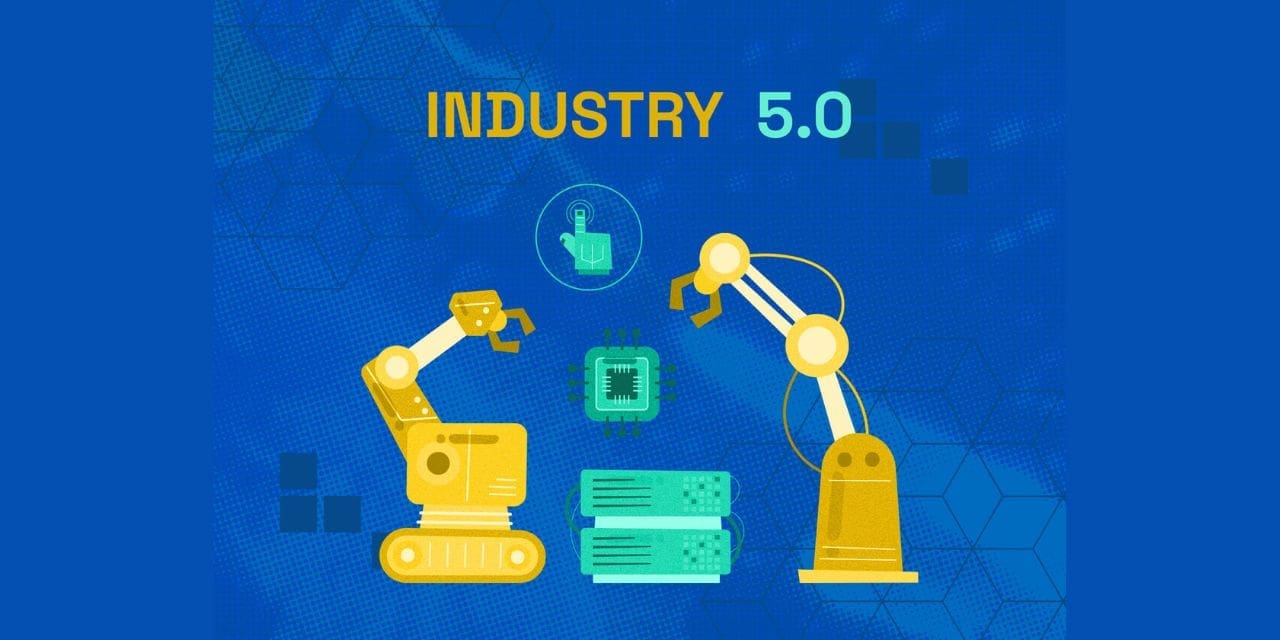By Deepesh Dhingra, Sr. Marketing Manager, Prophecy Market Insights
Report Content:
According to the research report, the global industry 5.0 market size was valued at US$ 61.84 billion in 2024 and is expected to touch USD 663.68 billion by 2034 at a CAGR of 29.8%.
Industry 5.0 is an emerging paradigm that extends the principles of Industry 4.0 by emphasising the collaboration between humans and machines. While Industry 4.0 focused on the integration of smart technologies, automation, and data exchange in manufacturing processes, Industry 5.0 shifts the focus towards creating a more balanced relationship where human creativity and cognitive capabilities are enhanced by advanced technologies. This evolution aims to bring a more human-centric approach, prioritising personalization, sustainability, and resilience in industrial operations. It envisions a future where human workers and intelligent systems work together harmoniously, leading to more innovative and customised production processes.
One of the key features of Industry 5.0 is its emphasis on sustainability and the well-being of workers. By leveraging technologies such as artificial intelligence, robotics, and the Internet of Things (IoT), Industry 5.0 seeks to create more efficient and environmentally friendly manufacturing practices. This approach not only enhances productivity but also reduces waste and conserves resources, aligning with global sustainability goals. Moreover, the human-centric approach aims to improve the quality of work life by reducing the repetitive and physically demanding tasks assigned to human workers, allowing them to focus on more creative and strategic roles. In summary, Industry 5.0 represents a significant shift towards a more collaborative, sustainable, and human-friendly industrial future.
Key market players are:
- ABB
- Honeywell International Inc.
- 3D Systems
- Rockwell Automation
- Siemens
- Emerson Electric Co
- Piher Sensing Systems
- Stratasys
- Schneider Electric
- Cisco Systems, Inc.
- FANUC CORPORATION
- Yaskawa Electric Corp
- Kuka AG.
- Universal Robots A/S
- Nexus Integra
Key market segments are:
Segmentation by Technological Integration
- Human-Robot Collaboration (Cobots):
- Description: Cobots are designed to work alongside human workers, enhancing their capabilities rather than replacing them. These robots are often used in tasks that require precision, endurance, or strength, while humans handle more complex decision-making and creative tasks.
- Applications: Assembly lines, packaging, quality control, and healthcare.
- Benefits: Increased productivity, improved safety, and enhanced job satisfaction as workers focus on more engaging tasks.
- Advanced-Data Analytics and AI:
- Description: Advanced data analytics and artificial intelligence (AI) play a crucial role in optimising manufacturing processes. These technologies enable real-time monitoring, predictive maintenance, and data-driven decision-making, enhancing efficiency and reducing downtime.
- Applications: Supply chain management, predictive maintenance, demand forecasting, and personalised product development.
- Benefits: Improved operational efficiency, reduced costs, and enhanced ability to meet customer demands with personalised products.
Segmentation by Industry Focus
- Manufacturing and Production:
- Description: Industry 5.0 in manufacturing emphasises the integration of advanced technologies to create more flexible, efficient, and sustainable production processes. This includes the use of cobots, AI-driven quality control, and smart factories.
- Applications: Automotive, electronics, consumer goods, and pharmaceuticals.
- Benefits: Increased production efficiency reduced environmental impact, and the ability to produce highly customised products on demand.
- Healthcare and Biotechnology:
- Description: In the healthcare sector, Industry 5.0 focuses on leveraging advanced technologies to enhance patient care, streamline operations, and improve research and development. This includes the use of AI for diagnostics, robotic surgery, and personalised medicine.
- Applications: Hospitals, clinics, biotechnology research, and pharmaceuticals.
- Benefits: Improved patient outcomes, more efficient healthcare delivery, and accelerated medical research and innovation.

